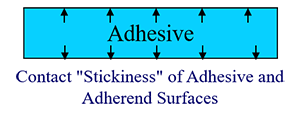What is pressure sensitive adhesive tape and how to choose?
2021/01/18


Pressure sensitive adhesive tape is to coat pressure-sensitive adhesive on the backing. The basic formulation of pressure-sensitive adhesive includes: elastomer, tackifier, antioxidant, and other additives required for special applications. We can say that the protagonist of pressure-sensitive adhesive is elastomer. According to the classification of elastomers, the early formulations are all natural rubber + tackifier. Natural rubber molecules contain double bonds, which are prone to yellowing and embrittlement, so other artificial elastomers have been developed one after another, such as acrylic, synthetic rubber, PU glue, silicone rubber, and butadiene rubber, etc.
Pressure-sensitive adhesive, as the name implies, is an adhesive that can be adhered to the surface of an object by applying light pressure in a short time. It can quickly wet the surface like a fluid, but when peeled off, it can leave the adhesive like a solid. It does not require auxiliary curing such as heating, catalyst or UV light irradiation, and has a long-lasting adhesive force.
Adhesion of Pressure Sensitive Adhesive
During the bonding process, the adhesive will go through three steps: liquid (glue) -> wetting -> solid (adhesive layer). There are three main adhesion parameters between the adhesive and the surface to be attached: adhesion, cohesion and initial tack.

The force between the adhesive and the surface of the adherent is called “adhesion force”. Adhesion is due to chemical bond, intermolecular force, and interface electrostatic attraction and mechanical force. Pressure-sensitive adhesive is to apply pressure to the bonding surface to generate adhesion. The adhesion will be affected by other conditions such as glue, pressure, temperature, time, and the object to be attached.

The cohesive force reflects the bonding force between the molecular chains of the tape itself, which is expressed in the retention force (shear resistance) after bonding. The static suspension method is used to measure the cohesive force. Adhesive tape with good cohesion has the following characteristics:
- High temperature resistance.
- Low initial viscosity, not easy to overflow glue.
- Strong retention.

The initial tack force is the force produced by the pressure-sensitive adhesive in short-term contact with the object to be attached with a small pressure. It is generally measured with a slope rolling ball. For example, high initial tack force is required in papermaking. Since the roll of paper is 1,900 meters per minute The speed passes through the machine, and the beginning part of the next roll must be connected with the end part of the previous roll to complete the roll change while the machine keeps running, which requires extremely high initial adhesion
Types of Pressure Sensitive Adhesives
| Acrylic Adhesive | Silicone Adhesive | Rubber Adhesive | |
|---|---|---|---|
| Adhesion | Low ~ High | Low ~ Medium | Medium ~ High |
| Initial Tack | Low ~ High | Low | High |
| Repeelability | Good / Excellent | Excellent | Low |
| Heat Resistance | -40°C to 200°C | -70°C ~ 260°C | 0°C to 65°C |
| Solvent Resistance | Good | Excellent | Poor |
| UV Resistance | Excellent | Excellent | Poor |
| Plasticizer Resistance | Medium / Good | Excellent | Poor |
| Bond to Low Energy Surface | Low ~ High | High | Medium |
| Transparency | Medium / Excellent | Medium | Low |
| Cost | Medium / High | High | Low |
Application Fields of Pressure Sensitive Adhesive Tapes
With a price range varying from low to high, acrylic adhesive tape offers cost-effective solutions suitable for various budgets. The key benefits of this adhesive tape include its easy-to-adjust properties, broad application scope, transparency, and exceptional weather resistance. It finds extensive usage across diverse industries including labeling, adhesive tape manufacturing, adhesive transfer tape production, masking tape creation, duct tape construction, as well as in the optoelectronics and medical fields. Over recent years, the rapid evolution of the electronics industry has boosted the demand for high-value ‘technological’ tapes. Acrylic adhesive tapes, prized for their high-temperature tolerance, resistance to high humidity, weather resilience, and excellent optical properties, have emerged as the go-to solution. This trend primarily hinges on the ongoing advancement in acrylic adhesive technologies, which continue to shape the tape industry’s future.
A silicone adhesive tape has low surface energy properties, good adhesion to low surface energy products, heat resistance, weather resistance, good electrical insulation and chemical resistance. However, it is expensive, so it is limited to special purposes of high temperature insulation and high temperature protection.
Rubber adhesive tapes are cheap, have good stickiness, but have poor weather resistance, and are mostly used in packaging tape, transfer tape, and masking tape.
Category
